Center for Urban Resilience, Innovation and Infrastructure (CURII)
Overview
The Center for Urban Resilience, Innovation and Infrastructure (CURII) provides relevant and innovative applied research and education to make our cities and communities more resilient, equitable, and sustainable. CURII thought leadership provides urban communities to become more sustainable and resilient by:
- Leading interdisciplinary research that informs and prepares urban communities for the challenges of the 21st century.
- Building strong collaborations with community partners to improve the quality of life and economic opportunity of people and communities in the District of Columbia, the nation, and the world.
• Developing effective partnerships with universities, research institutions, and other entities to create more resilient communities.
• Fostering innovation and entrepreneurship to improve urban resiliency and sustainability by strengthening educational opportunities and community training programs.
• Engaging in fundamental and applied research for sustainable practices and innovations.
Mission
CURII works with UDC students, partners, and community members on developing integrated resilience solutions to improve urban resilience and community health in Washington DC and beyond.
Community Education and Training
Green Infrastructure Program
As part of the UDC Equity Imperative, CURII established a partnership with DC Water and the Water Environment Federation (WEF) in 2016 to train underemployed and unemployed DC residents in green infrastructure, facilitating their entry into the District’s sustainability workforce. DC Water, in partnership with WEF, launched the National Green Infrastructure Certification Program (NGICP), a nationally recognized certification in green infrastructure construction, inspection, and maintenance. Through a grant from DC Water, CURII uses the NGICP, in line with other professional training programs, to train, qualify, and certify eligible participants in the field of green infrastructure. UDC provides the training at no cost to District residents who qualify (a high school diploma or equivalent and no college education or seeking to further a current career path).
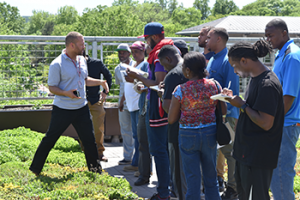
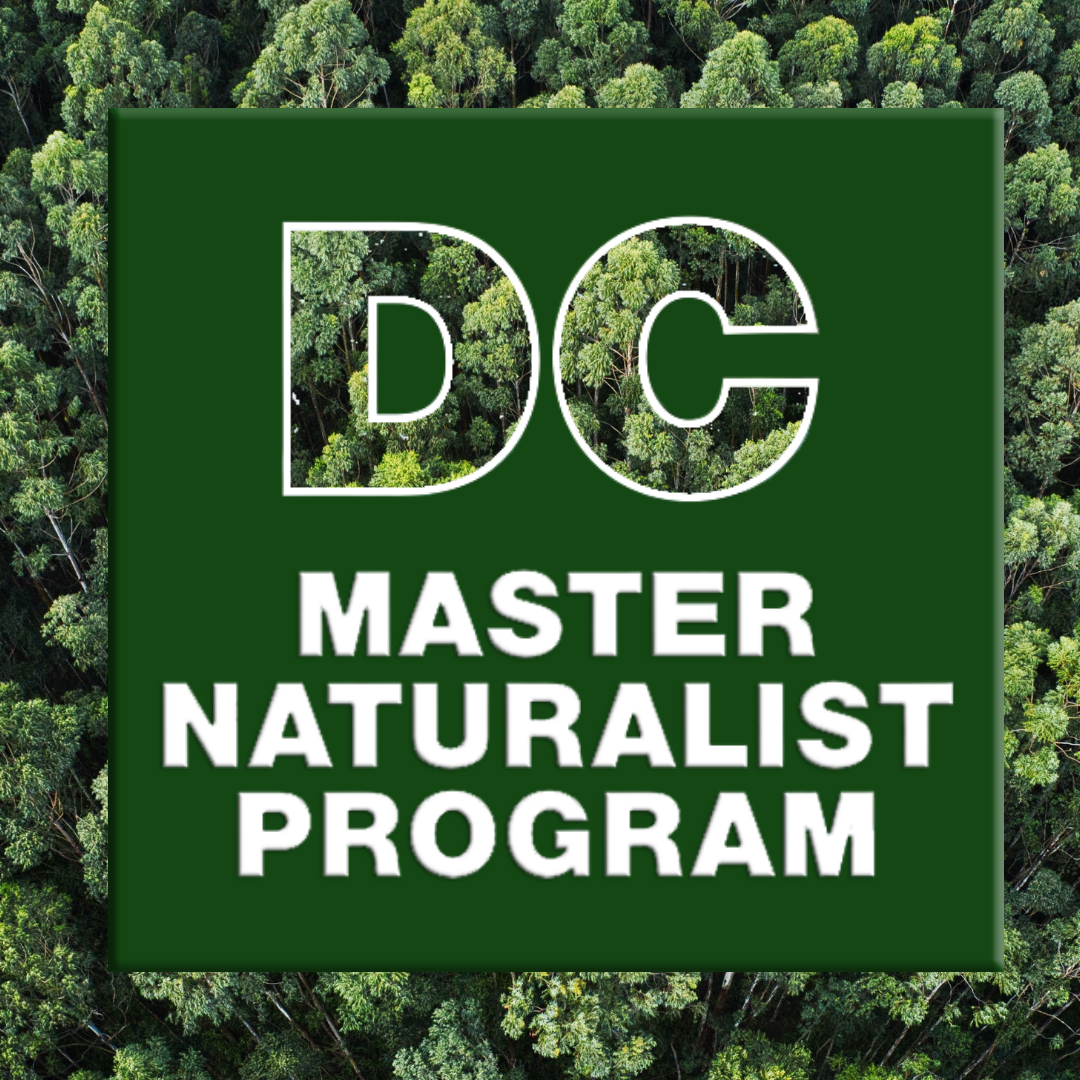
DC Master Naturalist Program
The DC Master Naturalist (DCMN) program engages individuals as stewards of Washington DC’s natural ecosystems and resources through science-based education and volunteer service. The two-part DCMN program training includes six weeks of instruction plus 40 hours of volunteer service. Classes, including field trips, are led by local experts and focus on a comprehensive overview of the natural ecosystems and urban factors that influence these systems. DCMN takes their learning about natural resources and environmental conservation and serves local communities in the District as well as engages in a wide range of citizen science activities that contribute to greater knowledge and understanding of our local habitat.
UDC Farmer’s Market
The UDC Farmers Market is a collaboration between UDC CAUSES, the National Latino Farmers & Ranchers Trade Association, and other independent local vendors. The market takes place each Saturday, May through the end of November, 8 am to 2 pm. The Market is located at 4200 Connecticut Ave., in front of the UDC Student Center. The Market is owned and operated by the Center for Urban Resilience, Innovation, and Infrastructure. Assorted seasonal produce along with eggs, fish, baked goods, and more are provided by the National Latino Farmers & Ranchers Trade Association and other local DC vendors comprised of farmers, producers, growers, bakers, and artisans from D.C., Maryland, Virginia, and Pennsylvania. Weekly events at the market often include live music, dance, cooking and food safety lessons, and demonstrations.
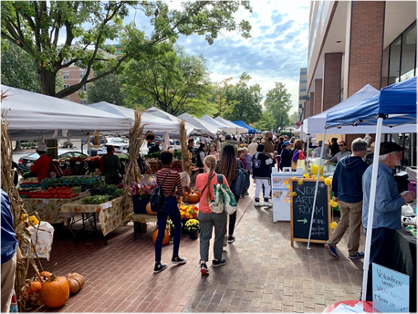
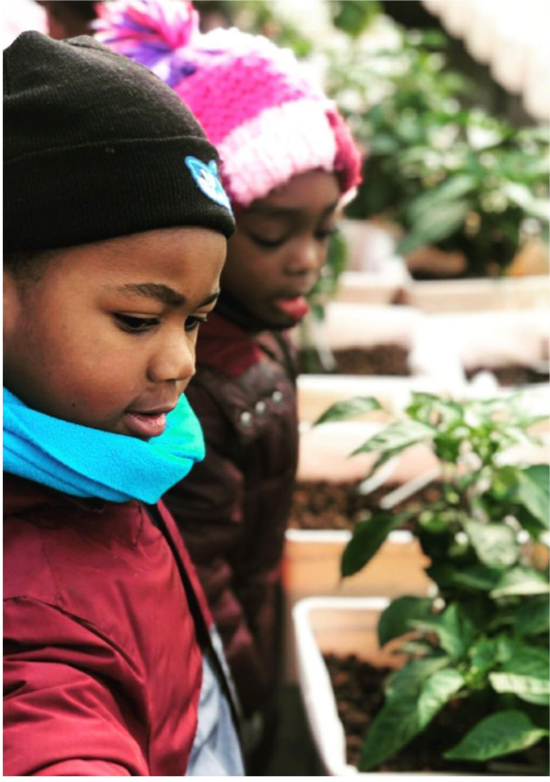
Lamond-Riggs Urban Food Hub
The Lamond-Riggs Food Hub (formerly Bertie Backus Food Hub) is a multi-functional urban agricultural site located in D.C.’s Fort Totten neighborhood. It includes 5,000 sq. ft. of hydroponics and aquaponics research facilities, a 2,500 sq ft. native plant nursery, a community garden with compost training open to all Ward 5 residents, a commercial kitchen, and a newly installed ‘Ag Pod’ unit. The site’s objectives are to:
- Conduct applied research to understand the benefits that controlled environment agriculture (CEA) can have in addressing food insecurity in urban areas
- Provide educational opportunities, job-skills training, entrepreneurial initiatives to local residents.
- Build a robust, local food economy through high-intensity aquaponics and hydroponics systems
- Bridge the gaps between waste mitigation, water management, and urban agriculture projects
Lamond-Riggs Urban Food Hub – Agricultural Pod
In 2020, UDC CAUSES and PEPCO started a partnership to work on a vertical hydroponic system known as the ‘Ag. Pod’–a 400 sq. ft. vertical, hydroponic production facility located at the Lamond-Riggs Uran Food Hub. As a state-of-the-art controlled environment system that makes it possible to grow food 365 days a year, this facility aims to demonstrate what the future of agriculture could look like in urban environments that balance a high demand for fresh produce and with limited space for agricultural production.
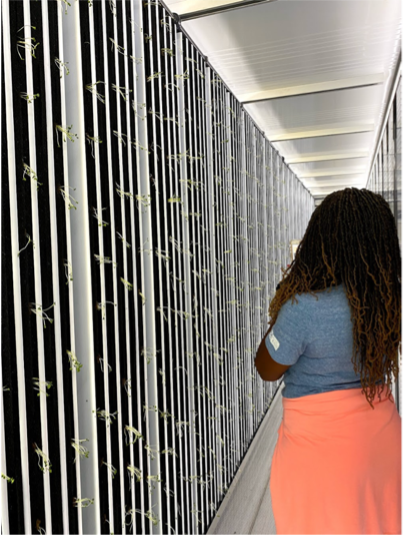
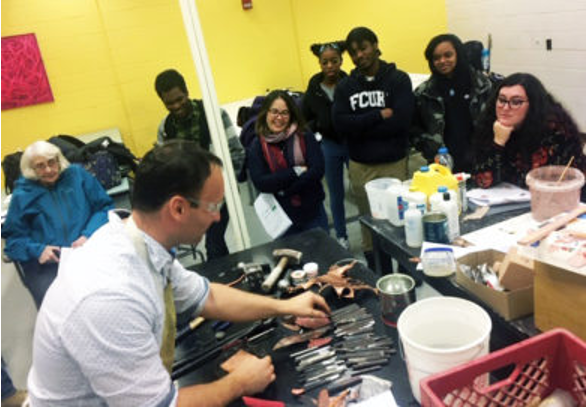
UDC Community MakerSpace
UDC-CAUSES team is thrilled to be establishing a UDC Community MakerSpace where all Washingtonians will be welcome to contribute and share valuable resources, knowledge, and expertise related to STEAM education, exploration, and development. This hybrid virtual/physical MakerSpace will encourage creativity and collaboration by featuring eclectic opportunities to engage in cross-disciplinary courses, workshops, DIY activities, and more, regardless of age, experience, or income. With an emphasis on experiential learning and accessibility (especially for the historically under-resourced & underserved), the UDC-Community MakerSpace will create a connective hub of People power that reflects the mission and uniqueness of UDC as an HBCU and the nation’s only urban land-grant university.
Community Planning with Oxon Run
CURII faculty and UDC graduate students work with residents in the Oxon Run neighborhood in Ward 8 to understand the role of land use and urban planning in shaping their community. This partnership is timely because the District has plans to naturalize the stream and to improve the park and trails in Oxon Run Park, and this community has a strong desire to understand and fully participate in these processes. Outcomes include a written report and presentation to Oxon Run community leaders and representatives from the District’s Department of Parks and Recreation (DPR) that documented the cultural and historical uses of Oxon Run based on a series of stakeholder interviews; and a series of focus groups among adult community members, youth, and returning citizens regarding use of and long-term vision for the Park.
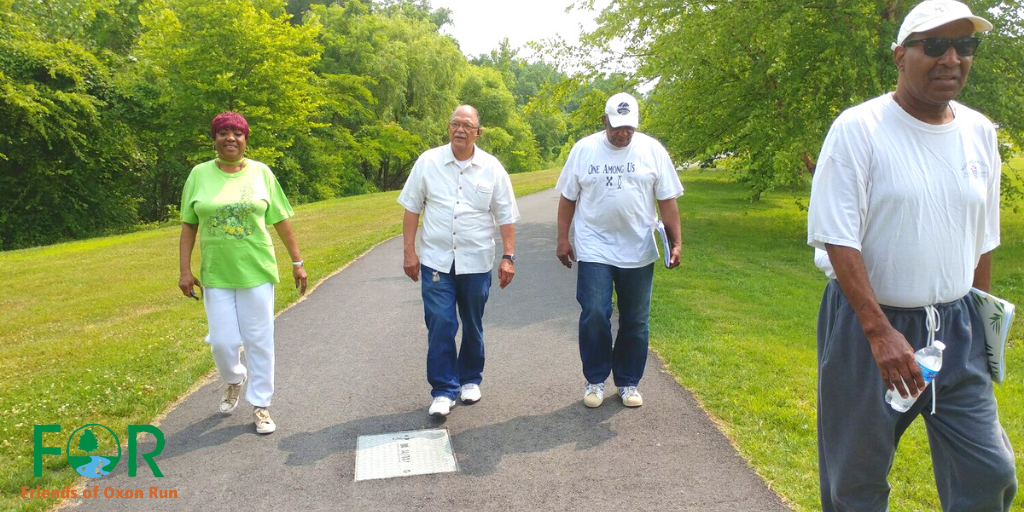
Research
1. Oak Health Decline in Washington DC Research
Oaks make up a significant proportion of the urban forest in Washington, DC. Of the top ten most important species in the District’s urban forest, two are oaks, Quercus palustris, and Q. alba (iTree 2015). Given the importance of oaks in providing benefits to both human and wildlife residents, heightened mortality of oaks could have wide-ranging impacts on the urban forest in Washington, DC. This research project will assess the current condition and survival of oak trees among street trees in the District of Columbia. Oak trees will be evaluated for the presence of pests or pathogens, as well as abiotic factors that may negatively impact urban trees. This work will be coordinated with public, private, institutional, and federal property owners across the District.
2. Quantification of environmental, economic, and societal impacts of specialty crops grown in aquaponics and hydroponics
The goal of this project is to develop an innovative life cycle sustainability assessment (LCSA) framework that will measure the environmental, economic, and societal impacts of specialty crops grown in aquaponics and hydroponics systems compared to a traditional soil-based system. The LCSA tool can also be utilized to measure the impacts of packaging, transport, and distribution. The aim is to study end-to-end impacts, from food production to marketing and distribution, to understand how these soilless systems could be more widely adopted.
Filling this critical knowledge gap will aid the development of a robust and sustainable soilless urban agriculture system in DC, help our communities recover from the impacts of COVID-19 by building sustainable businesses, and enhance the resilience of urban farmers and food businesses.
3. Innovative Low Impact Development Treatment Train
Stormwater management is a vital concern for urban areas where a lack of natural landscaping can cause excess water from rain events to gather on surfaces such as roads and parking lots, leading to a risk of flooding and polluted waters. Green Infrastructure is an approach to stormwater management that uses plants and other natural elements to mimic the natural water cycle, reducing the risk of flooding and pollution. The District Department of Energy and Environment (DOEE) and UDC have developed an innovative green stormwater infrastructure approach to manage stormwater runoff from an urban parking lot by installing tree cells to allow the runoff to filtered and absorbed back into the ground. In addition, UDC is evaluating the effectiveness of systems for safe rainwater reuse from rain gardens, another green infrastructure practice. A prototype project for innovative stormwater management was designed and researched at the UDC Bertie Backus Campus. This research will be used to help the reach the District’s urban sustainability and urban resiliency goals.
4. Integrating Urban Agriculture and Green Infrastructure
Urban Agriculture is a rapidly expanding movement that can provide multiple environmental, social, and economic benefits to local communities. Urban farms and gardens provide produce to communities, beautify the city, improve air quality, moderate temperature, and provide critical social infrastructure. However, if improperly managed, activities from urban farms and gardens can negatively affect water quality. Impacts from urban farming activities on water quality can be minimized by using adaptive best management practices (BMPs).
The University of the District of Columbia and the Low Impact Development Center have developed an innovative model that integrates urban agriculture into green infrastructure projects in Washington, DC. Prototype BMPs have been set up and are being monitored at three existing UDC CAUSES’ urban “Food Hubs” located in underserved areas of the District. This research project focuses on using innovative, simple, and economically feasible methods to control stormwater at the community and household scale. At-risk youth from the community were provided with training and technical support to construct the projects.
5. Assessment of the Performance of Productive Urban Agriculture Green Roofs
In this project, we leverage substantial existing green roof research facilities and monitoring infrastructure established by UDC as well as Stevens Institute of Technology (Stevens). These include a 20,000 ft2 combined agricultural/extensive/intensive green roof at UDC, and a purpose-built field testing facility at Stevens hosting up to 40 pilot-scale green roofs. Existing monitoring of these sites means that this research submitted to DOEE will benefit from pre-project data, as well as existing experience by managing both sites in UDC and Stevens without the usual start-up learning curve. We generated quantitative data on storm event water quality and retention from multiple design combinations (substrate compositions) of extensive green roofs, agricultural green roofs, and a conventional (black) roof. We tested new materials in two configurations, including an innovative method suitable for retrofit of existing green roofs, for their ability to enhance green roof water quality. The key questions we endeavor to answer include: Should agricultural green roofs receive credit for stormwater mitigation? Does regular irrigation compromise stormwater retention? To what extent do substrate (growing media) and composition depth influence retention? Does water quality differ amongst green roof design configurations, and if so, why? Do innovative materials including zeolite and/or biochar enhance water quality in green roof discharge?
6. Green Infrastructure and Gentrification Research in Washington DC
Many cities develop and implement urban sustainability plans by installing green infrastructure (green streets, rain gardens, and bioswales.) While these projects provide many physical and mental health benefits to urban residents, the long-term viability of low-income communities is threatened. The installation of green infrastructure can result in raised property values, displaced residents and businesses, and obliteration of local culture (Richards 2020, Anguelovski et al 2018, Cole et al 2017.) These outcomes have been documented in the District (Quander 2019). CURII staff hosted a series of small listening sessions within the District to understand local residents’ perception of green infrastructure, including its potential relationship to gentrification and is currently reviewing this data as well as the academic literature on this topic in order to determine best management practices going forward.
7. Triple Yield Project
In urban areas, sustainable energy production, urban agriculture, and stormwater management are often competing for land and space. UDC is working with the United States Department of Agriculture (USDA) to develop and test an urban farming system that collects and uses its own water and energy (closed-loop). This system will be used to generate guidelines and planting recommendations for growing specialty crops under solar panels in the DC region, allowing local farmers to continue to produce food while also making use of sustainable energy and stormwater management practices.
Water Resources Research Institute
The Water Resources Research Institute (WRRI) is housed within CURII. The mission of WRRI is to provide the District of Columbia with interdisciplinary research support to identify DC water resources problems and contribute to their solution. The institute provides training and disseminates research findings that address water issues in the D.C. area, and beyond. The institute also supports collaborative research that engages not only faculty members and students but also a broad array of stakeholders to address regional water issues in a holistic way. Areas of focus include drinking water source protection, stormwater management and planning, water safety, and watershed stewardship.
For more information on WRRI, click here.
Staff Contact
Tsakani Ngomane, Ph.D (she/her)
Director, Center for Urban Resilience, Innovation and Infrastructure (CURII)
202.909.8629 / 202.274.7161
tsakani.ngomane@udc.edu
Dr. Tolessa Deksissa
Director, Water Resources Research Institute
202.274.5273
tdeksissa@udc.edu
Danyal Eisenbrandt
Staff Assistant, Center for Urban Resilience, Innovation and Infrastructure
202.274.3066
danyal.eisenbrandt@udc.edu
